Copyright 2013 by Amy Auman and Lisa Purcell Photos Copyright 2010 by Jonathan Conklin Photography, Inc. Produced for Skyhorse Publishing by Moseley Road, Inc. (www.moseleyroad.com) All Rights Reserved. No part of this book may be reproduced in any manner without the express written consent of the publisher, except in the case of brief excerpts in critical reviews or articles. All inquiries should be addressed to Skyhorse Publishing, 307 West 36th Street, 11th Floor, New York, NY 10018. Skyhorse Publishing books may be purchased in bulk at special discounts for sales promotion, corporate gifts, fund-raising, or educational purposes.
Special editions can also be createdto specifications. For details, contact the Special Sales Department, Skyhorse Publishing, 307 West 36th Street, 11th Floor, New York, NY 10018 or info@skyhorsepublishing.com. Skyhorse and Skyhorse Publishing are registered trademarks of Skyhorse Publishing, Inc. , a Delaware corporation. www.skyhorsepublishing.com 10 9 8 7 6 5 4 3 2 1 Library of Congress Cataloging-in-Publication Data is available on file. ISBN: 978-1-62873-637-3
eISBN: 978-1-62873-996-1 Printed in China CONTENTS Jathara Parivartanasana  INTRODUCTION T he practice of yoga, developed in India thousands of years ago, aims to educate the body, mind, and spirit.
INTRODUCTION T he practice of yoga, developed in India thousands of years ago, aims to educate the body, mind, and spirit.
Today, this ancient system has become one of the most popular ways of both getting fit and finding some serenity in todays hectic world. Through breathing techniques and mastering a series of posesknown as asanas as a student of yoga you will truly refresh your body, mind, and spirit. The following pages will focus on the physical aspects of yoga and feature more than fifty asanas common to many yoga disciplines. Step-by-step photos and anatomical illustrations guide you through attaining the asanas, with the visible working muscles in each asana highlighted in the illustrations. There are also handy tips that guide you as you learn to achieve and hold each asana, as well as a list of benefits, cautions, and each asanas target muscles. A section on yoga breathing introduces you to the practice of yoga.
Next you will learn a variety of asanas. The asanas are grouped into six sectionsWarm-up, Resting & Rejuvenating Asanas, Standing & Balancing Asanas, Forward Bends, Yoga Backbends, Seated Asanas & Twists, and Arm Supports & Inversions. The final section of the book helps you pull the asanas youve learned into flowing sequences. BREATHING BASICS Y OGA IS LARGELY embodied by the physical poses, or asanas, that one practices. The asanas focus on strength, flexibility, and bodily control. Beneath our structure of bones, tendons, and muscles, however, there is an entire respiratory system working simultaneously.
Similar to the processes in digestion and cellular function, breathing draws nutrients into your body and expels waste. Breath is the link between our physical and mental selves, and breath control, or Pranayama, is an important yoga practice that you should exercise separately and incorporate into the asana practice. Expanding and strengthening your breath and mind, then, coincides with stretching and strengthening your body. Prananyama Practicing Pranayama means to control your internal pranic energy, or breath of life. Apana refers to the elimination of breaththe alternate action of prana. While you intake the breath of life, you must also eliminate the toxins within the depths of your respiratory system.
There are numerous Pranayama exercises for you to practice the movement of prana. Featured here are examples of both rejuvenating and relaxing exercises; all of them will replenish fresh oxygen to your lungs and connect your mind with your body. Samavrtti: Same Action Observe the irregularities of your breathing, and transition into a slower and more even breath. To achieve the same action, or Samavrtti, inhale for four counts, and then exhale for four counts. This breathing technique calms the mind and creates a sense of balance and stability. Ujjayi: The Victorious Breath Ujjayi is sometimes called the ocean breath because of the sound air makes as it passes through the narrowed epiglottal passage.
Maintaining the same even rhythm as the breath in Samavritti, constrict your epiglottis in the back of your throat to practice Ujjayi. Keep your mouth closed, and listen for the hiss in the back of your throat. Ujjayi breathing tones internal organs, increases internal body heat, improves concentration, and calms the mind and body.  PREPARING FOR PRANAYAMA Before practicing Pranayama in seated positions, lie down in Savasana (see ) to focus on your breath. Breathe evenly, and focus on filling every part of your lungs with oxygen. Air should fill your lungs from the bottom up.
PREPARING FOR PRANAYAMA Before practicing Pranayama in seated positions, lie down in Savasana (see ) to focus on your breath. Breathe evenly, and focus on filling every part of your lungs with oxygen. Air should fill your lungs from the bottom up.
First, your diaphragm expands to fill your abdomen. Air then fills the middle of your lungs within your rib cage, until it finally reaches the top of your lungs, indicated by the rising of your chest. Both sides of your chest should rise equally. Most people only fill the top of their lungs with air, leaving the bottom portions largely deprived of proper nourishment. When you are ready to practice Pranayama in a comfortable seated position, begin by placing one hand on your chest and the other on your abdominals. This will help you observe your breath.
Close your eyes, lift up out of your spine, tuck your chin slightly toward your sternum, and listen to your breath as your rib cage and abdominals expand and contract. Focus on the pathway your breath travels, the rhythm, and the texture of the sound. BREATHING BASICS  To stimulate Ajna chakra, place your index and middle fingers on your forehead. The Ajna chakra is known as the chakra of the mind. This space between your eyebrows is said to be where the nadis energy channels through your nostrils and meets with the central nadi. This is a very powerful hand position in Pranayama practice.
To stimulate Ajna chakra, place your index and middle fingers on your forehead. The Ajna chakra is known as the chakra of the mind. This space between your eyebrows is said to be where the nadis energy channels through your nostrils and meets with the central nadi. This is a very powerful hand position in Pranayama practice.
Kumbhaka: Retaining the Breath Kumbhaka is the practice of holding your breath. Begin by practicing Ujjayi or Samavrtti breathing. After every four successive breaths, hold your breath in Kumbhaka for four to eight counts. Then, allow your exhalation to last longer than your inhalation. Initially, your Kumbhaka will be shorter than your other breaths. Eventually, reduce the number of breaths in between Kumbhaka breaths and increase the number of counts in your inhale, exhale, and Kumbhaka.
Build up to an exhalation twice as long as your inhalation and a Kumbhaka breath three times as long. Kumbhaka practice strengthens the diaphragm, restores energy, and cleanses the respiratory system.  To form the Vishnu Mudra hand position, curl your index and middle fingers down, while keeping your ring finger and pinkie close together and pointed upward. Anuloma Viloma: Alternate Nostril Breathing Anuloma Viloma purifies the energy channels, or nadis, through the right and left nostrils. This stimulates the movement of prana. Begin by forming the Vishnu Mudra hand position, with your index and middle fingers of your right hand curled down.
To form the Vishnu Mudra hand position, curl your index and middle fingers down, while keeping your ring finger and pinkie close together and pointed upward. Anuloma Viloma: Alternate Nostril Breathing Anuloma Viloma purifies the energy channels, or nadis, through the right and left nostrils. This stimulates the movement of prana. Begin by forming the Vishnu Mudra hand position, with your index and middle fingers of your right hand curled down.

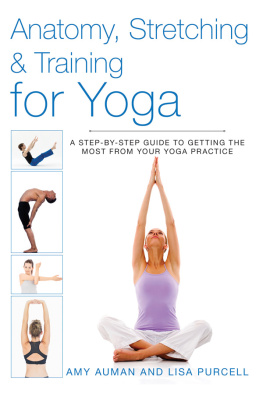


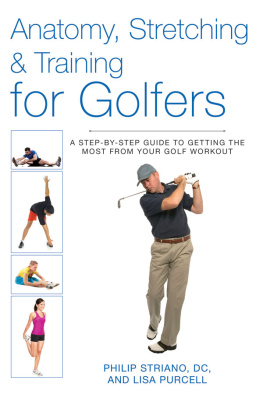

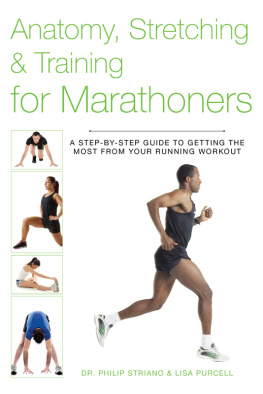
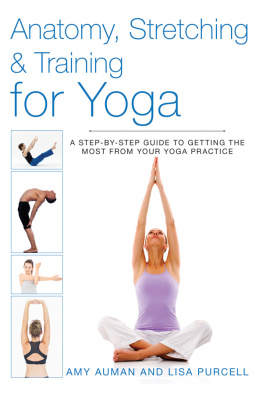
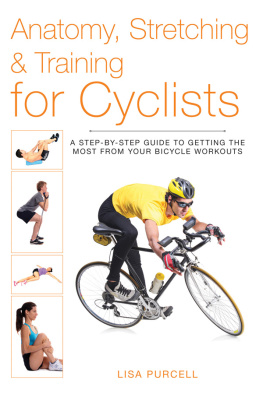

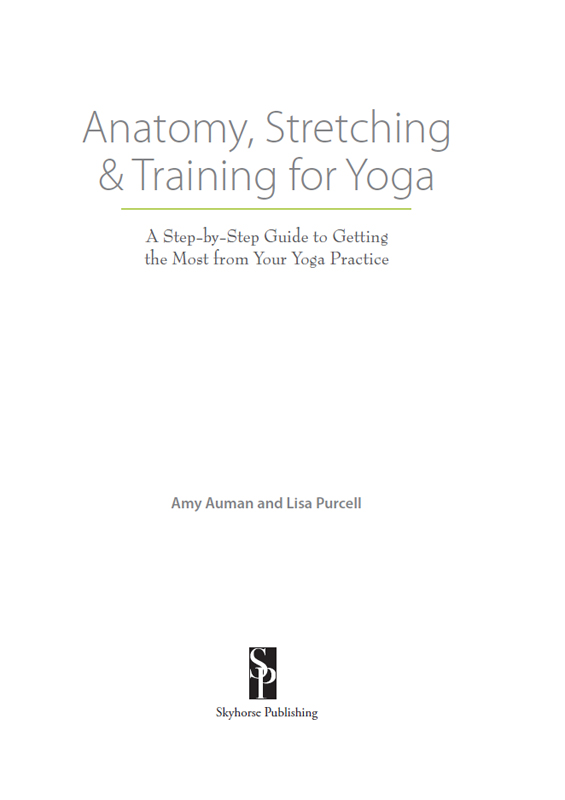
 INTRODUCTION T he practice of yoga, developed in India thousands of years ago, aims to educate the body, mind, and spirit.
INTRODUCTION T he practice of yoga, developed in India thousands of years ago, aims to educate the body, mind, and spirit. PREPARING FOR PRANAYAMA Before practicing Pranayama in seated positions, lie down in Savasana (see ) to focus on your breath. Breathe evenly, and focus on filling every part of your lungs with oxygen. Air should fill your lungs from the bottom up.
PREPARING FOR PRANAYAMA Before practicing Pranayama in seated positions, lie down in Savasana (see ) to focus on your breath. Breathe evenly, and focus on filling every part of your lungs with oxygen. Air should fill your lungs from the bottom up. To stimulate Ajna chakra, place your index and middle fingers on your forehead. The Ajna chakra is known as the chakra of the mind. This space between your eyebrows is said to be where the nadis energy channels through your nostrils and meets with the central nadi. This is a very powerful hand position in Pranayama practice.
To stimulate Ajna chakra, place your index and middle fingers on your forehead. The Ajna chakra is known as the chakra of the mind. This space between your eyebrows is said to be where the nadis energy channels through your nostrils and meets with the central nadi. This is a very powerful hand position in Pranayama practice. To form the Vishnu Mudra hand position, curl your index and middle fingers down, while keeping your ring finger and pinkie close together and pointed upward. Anuloma Viloma: Alternate Nostril Breathing Anuloma Viloma purifies the energy channels, or nadis, through the right and left nostrils. This stimulates the movement of prana. Begin by forming the Vishnu Mudra hand position, with your index and middle fingers of your right hand curled down.
To form the Vishnu Mudra hand position, curl your index and middle fingers down, while keeping your ring finger and pinkie close together and pointed upward. Anuloma Viloma: Alternate Nostril Breathing Anuloma Viloma purifies the energy channels, or nadis, through the right and left nostrils. This stimulates the movement of prana. Begin by forming the Vishnu Mudra hand position, with your index and middle fingers of your right hand curled down.